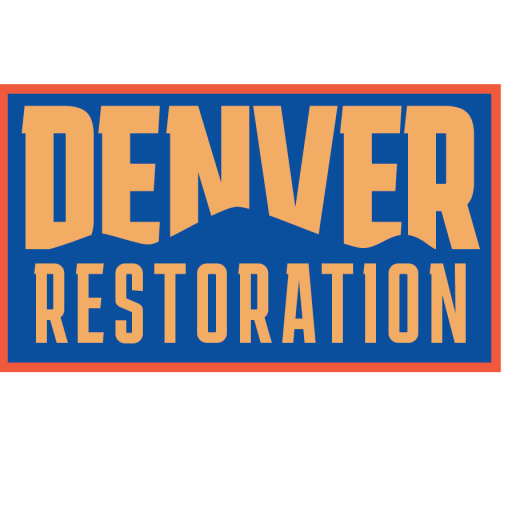Understanding Water Stains: The Invisible Damage
Water stains on your ceiling can appear as unsightly blemishes, filling homeowners and property owners with dread. They often signal a hidden problem, demanding immediate attention. Furthermore, they can negatively impact the aesthetics of your home or office, decreasing its value. To preserve your property’s worth and integrity, it’s crucial to understand what these stains mean, their causes, and how to effectively remove them.
What Causes Water Stains on Ceilings?
Water stains are usually indicative of a larger issue, often related to water damage in your property. They could be due to a leaking pipe, a crack in the roof, or inadequate insulation, leading to condensation buildup. If the source of water damage is not addressed promptly, it can lead to other serious issues like mold growth, which is covered in detail on our blog post.
Damage Assessment and Estimation: The First Step
Once the presence of a water stain is detected, the first step is a thorough damage assessment. This evaluation will determine the extent of the damage, establish the source of the water leak, and the proper restoration measure necessary to resolve the problem. It is a critical stage in ensuring that the restoration process is effective and lasting.
Water Stain Removal: Restoration Techniques and Equipment
The process of water stain removal from the ceiling involves a series of steps that should be carried out meticulously to avoid further damage. First, the source of the leak should be identified and repaired. Once this is done, the ceiling should be dried out to halt any further water damage.
Following this, the stain should be cleaned and primed before repainting. To achieve the best results, it is advisable to use specific stain-blocking primers and paints.
Environmental and Health Safety During Restoration
Safety is paramount when carrying out a restoration process. Be conscious of the risks associated with water damage, such as electrical hazards and potential mold growth. Ensure to wear protective gear like gloves, masks, and goggles during the process. If the damage is extensive or if mold is present, do not hesitate to engage professionals to handle the restoration.
Insurance and Legal Compliance in Restoration
Understanding your insurance coverage in the event of water damage is crucial in informing your next steps. Some insurance policies cover water damage repairs, while others do not. It is essential to know the terms and conditions of your policy and seek professional help if necessary.
Communicating with Customers During Crisis Management
In the event of a water damage crisis, communication is key. Property managers and business owners should ensure they communicate effectively with tenants or employees, informing them about the situation and the steps being taken to rectify it. This builds trust and helps mitigate panic and confusion.
Preventing Future Water Stains
Prevention is better than cure. Regular maintenance of your property’s plumbing and roofing systems can greatly reduce the chances of water stains appearing on your ceiling. Awareness of the common causes of water damage, as detailed in our blog post, can also be beneficial in preventing future water stains or damage.
In conclusion, dealing with water stains on your ceiling might seem daunting, but with the right knowledge and approach, they can be effectively removed and prevented. The key is to act quickly, assess the situation accurately, and use the right restoration techniques and equipment.
Maybe you’re curious about the link between basements and mold? Have a look at our blog post to find out more.
Addressing the Invisible Damage: Water Stains and the Risk of Mold
In addition to the aesthetic damage, the appearance of water stains on your ceilings could also signal an increased risk of mold development. Depending on the type of mold, such growths can pose serious health risks, making mold another crucial concern in the process of addressing water damage. Mold reproduces through microscopic spores which can grow undetected, especially in areas with unchecked water leaks such as the hard-to-reach corners of your ceiling.
Understanding the various types of mold, their implications on health, and how to remove them properly is critical for the end-to-end restoration. There are certain mold remover products that you can use to effectively rid your home of the potentially dangerous fungus as a first-response approach while awaiting professional aid.
The Hidden Cost: Increased Energy Bills
This invisible damage doesn’t just stop at mold. Often, continuous water leakage can lead to increased energy bills. This is because the excess moisture can seep into your insulation, rendering it ineffective. By reducing the insulating capability of your home or office, these leaks can cause your heating, ventilation, and air conditioning (HVAC) system to work overtime, leading to significantly higher energy costs.
Restoration: A Professional Touch
While there are certainly some small-scale water leakages and resultant damages that can be managed with DIY methods, professional expertise often proves invaluable. Remember, water stains on your ceilings often point towards larger, possibly systemic issues. Professional restoration services not only help with the immediate cleanup, but also the root cause analysis underlying the water leakage, thereby preventing future occurrences.
Moreover, professionals have access to specialized restoration tools that are far more efficient and effective compared to most things found in an average household’s tool kit. Employing the services of water damage restoration professionals guarantees precision and convenience, hence ensuring minimal disruption to your daily routine.
Efficient Crisis Management: Communicating the Crisis
Transparent and timely communication during a water damage crisis minimizes panic and reassures your stakeholders – whether they are your house residents, tenants, or office staff. Outlining the problem, explaining the solutions being pursued, and providing an estimated timeline for resolution will manage expectations and build trust. It is essential to maintain this communication throughout the restoration process, as detailed here.
Restoring Your Peace of Mind: The Role of Insurance
When faced with substantial water damage, an integral part of the restoration process involves understanding your insurance policy’s scope of coverage. Not all policies cover the cost of water damage repairs, hence the importance of understanding what is and is not covered under your specific policy. Retaining evidence of the damage, lodging a claim, and managing the entire process can seem intimidating, making the role of professional restorers all the more crucial, as they often provide guidance on insurance claims too.
A Stitch in Time: Preventing Future Occurrences
Proactive prevention is the key to avoiding future water stains and damage, and thereby, saving significant repair costs. Regular maintenance of your property’s plumbing system, periodic inspection of roof conditions, and ensuring proper insulation can collectively help in the prevention of water damage.
While all the information above might seem overwhelming, it’s crucial that you don’t let water stains and their implications intimidate you. With the right understanding, approach and responsive action, water stains can be effectively managed and prevented, thus retaining and restoring the value and integrity of your property.
If you’re interested in learning more about how to prevent mold in one of the most common areas of occurrence, check out our guide on taking control of musty odors in your basement. Knowing the causes and prevention methodologies can avoid potential difficulties down the line.
But what about possible fire damage as well? You might also want to understand the top causes of kitchen fires, a leading source of home fires, which we detail in our blog post.
Remember, knowledge is power. The more aware and informed you are, the better-equipped you’ll be to manage your property and its upkeep effectively.

